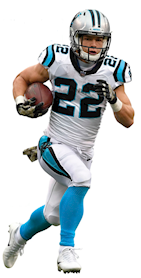Ats Football Meaning

What does “point spread” mean as a sports betting term? Commonly referred to as just the “spread.” It is the betting line or odds used to determine the parameters for wagering on either.
As a fan, you don’t care if your team wins by a point or 100. A win is a win, though that 100-point win would be a little easier on the nerves.
In sports betting, how much a team wins by is usually all that matters.
The most popular way to bet for the two most popular sports, basketball and football, is with the point spread, also known as the “side.” Most baseball, hockey and soccer bets are on the moneyline, which is betting on a team to win straight up with adjusted odds. Football and basketball have moneyline bets available too, but most people will take the point spread.
The term 'against the spread', commonly referred to as ATS, is one of the more commonly used sports betting terms. To bet against the spread is simply to bet on a pointspread. Backfield: The group of offensive players — the running backs and quarterback — who line up. Point Spread Definition. A point spread is a bet on the margin of victory in a game. The stronger team or player will be favored by a certain number of points, depending on the perceived gap in ability between the two teams. A minus sign (-) means that team is the favorite. Knowing the full standings for the NFL divisions is important for football bettors, but knowing the breakdowns within the standings is even more important. We also provide crucial NFL ATS records (against the spread) standings for each team, because some teams that lose a lot also happen to cover the spread.
The concept can be a bit confusing if you’ve never dabbled in sports betting before.
Why bet with the point spread?
The point spread was created to attract more action on a game. When the San Francisco 49ers are expected to blow out the Arizona Cardinals, it’s not enticing to lay $300 to win $100 on a moneyline. But when the 49ers are 11-point favorites and each side is -110 odds? That’s much easier.
In that example, the 49ers are spotting the Cardinals 11 points before the game starts, at least for bettors. The 49ers have to win by 12 or more points to cover the spread. If the Cardinals win or lose by 10 or less, that side wins the bet. If the game lands on 11, like a 21-10 49ers win, it’s a push and all bets are refunded. If you see a -11 that means that team is favored, and +11 means you’re taking the underdog.
Ncaa Football Ats
Nothing sharpens your math skills better than trying to figure out how big your lead as a bettor is if you have a 22.5-point basketball underdog that is losing 90-72.
The problem with the point spread can be when a team — which really doesn’t care that you bet the favorite at -11 — has a 14-point lead but gives up a meaningless score at the end to win by only seven points. They’re still happy with the win. You, as a bettor, are not.
© Provided by Yahoo! Sports Sportsbooks have large boards that display point spreads for all games that day. (AP Photo/John Locher, File)Point spreads lead to bad beats
Best College Football Teams Ats
The most infamous example of a bad beat with the point spread probably came in the 2004 Final Four at the NCAA men’s basketball tournament.

Duke was a 2.5-point underdog against UConn. The Huskies rallied late and took a 79-75 lead on a free throw with 3.2 seconds left. The game itself was over; Duke couldn’t score twice in a few seconds. But Duke guard Chris Duhon pulled up for a running 3-pointer just over the half-court line and banked it in at the buzzer. Duke lost 79-78, but bettors who had Duke and 2.5 points won. March Madness is a huge event for bettors, and reports at the time estimated that Duhon’s “meaningless” shot resulted in a $30 or $40 million swing in Nevada. UConn players celebrated at the final buzzer. UConn bettors doubled over in pain. That’s the difference between betting the moneyline and the point spread.
Baseball and hockey have point spreads too, the “run line” in baseball and “puck line” in hockey. It’s generally 1.5 with odds adjusting accordingly. Taking a big baseball favorite at -1.5 runs can make the odds more palatable. Of course, betting the New York Yankees at -1.5 to bring down the odds from -190 to -110 isn’t too fun when they win 4-3 and you don’t cash a bet.
Betting on the point spread is the most common way to wager on sports. And the first time you take a favorite that wins the game but doesn’t cover the spread, you’ll understand every bettor’s heartbreak.
What Does Ats Mean Betting
In sports betting terminology, SU is an abbreviation for “Straight Up”, which refers to the record of a team without factoring in the spread. Consequently, placing a straight up bet means that you’d be betting on the actual outcome of the game and that the point spread would be irrelevant.
Conversely, ATS or “Against The Spread” refers to the record of a team in relation to the spread. Please note that ATS refers exclusively to spread numbers – the team’s record in the standings is irrelevant. Furthermore, keep in mind that SU and ATS statistics will rarely be similar, so it generally isn’t the best idea to mix them up.
Usage Example
If Team A is 9-1 SU in its last 10 games, it means that it won 9 out of its last 10 games. However, the same team can be 6-4 ATS, which means that it covered the spread in 6 out of its last 10 games.
Trivia
The spread, or line, is a number assigned by the sports book which handicaps one team and favors another in order to make betting on the underdog more desirable. In order to determine which team wins against the spread, the line is either added or subtracted from each team’s score.